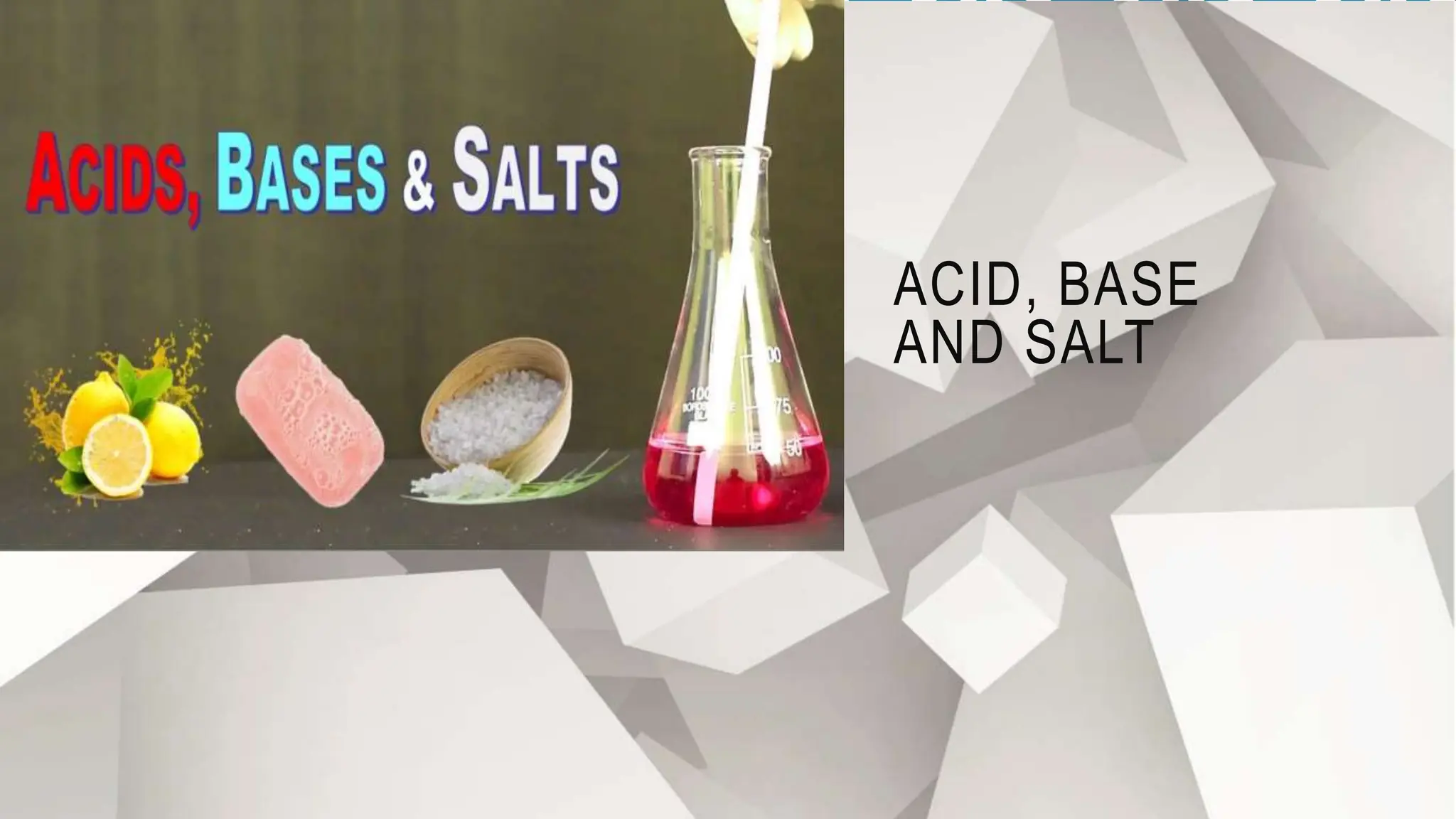Acids and bases react with each other through a neutralization reaction, forming a salt and water. For example, when hydrochloric acid reacts with sodium hydroxide, sodium chloride and water are produced. Acids and bases share similarities in that they both ionize in water, producing ions that allow the solution to conduct electricity. They differ in that acids contain hydrogen ions and bases contain hydroxide ions. When an acid and base react, the hydrogen ions and hydroxide ions combine to form water.








![Hydrochloric acid (HCI)
Sulphuric acid (H2SO4)
Calcium hydroxide [Ca(OH)2}
Sodium hydroxide (NaOH)
Potassium hydroxide (KOH)
Magnesium hydroxide [Mg(OH)2]
Ammonium hydroxide (NH4OH)
Nitric acid (HNO3)
Acetic acid (CH3COOH)](https://image.slidesharecdn.com/acidbaseandsalt-240407080750-95b4b5ac/75/Tenth-chapter-no-2-ACID-BASE-AND-SALT-pptx-9-2048.jpg)
























![STRENGTH OF ACID AND BASE
pH – MEASUREMENT OF STRENGTH OF ACID AND BASE
pH stands for the power of hydrogen ion concentration in a solution.
pH values decide whether a solution is acidic or basic or neutral. pH
scale was introduced by S.P.L. Sorenson. It is mathematically
expressed as
pH = -log10[H+]
For neutral solution [H+] = 10–7M; pH = 7
For acidic solution [H+] > 10–7M; pH < 7 For
basic solution [H+] < 10–7M; pH > 7
When OH– ions are taken into account the pH expression is replaced by
pOH
pOH = -log10[OH–]](https://image.slidesharecdn.com/acidbaseandsalt-240407080750-95b4b5ac/75/Tenth-chapter-no-2-ACID-BASE-AND-SALT-pptx-34-2048.jpg)
























